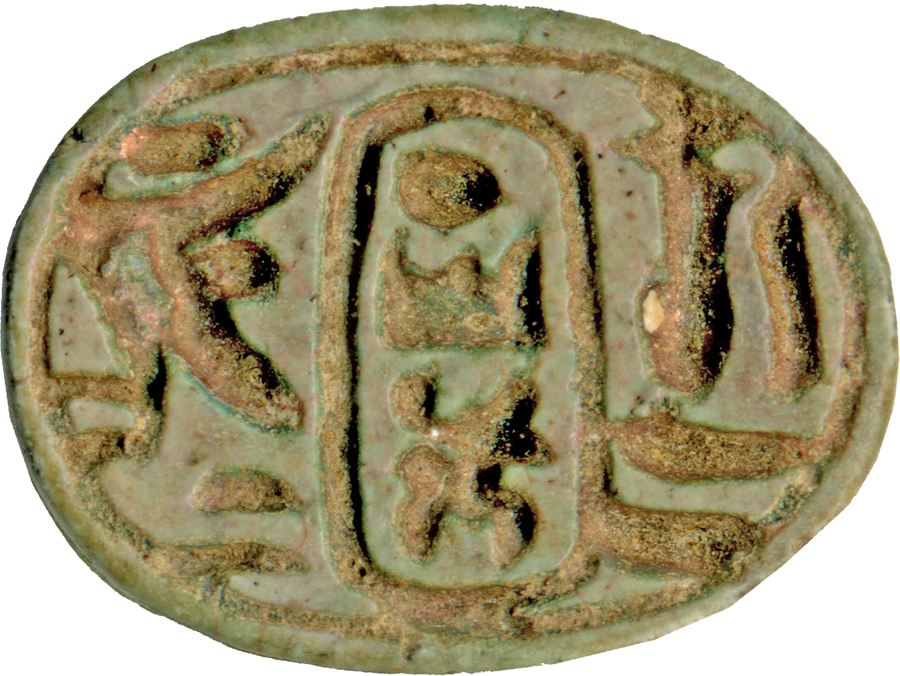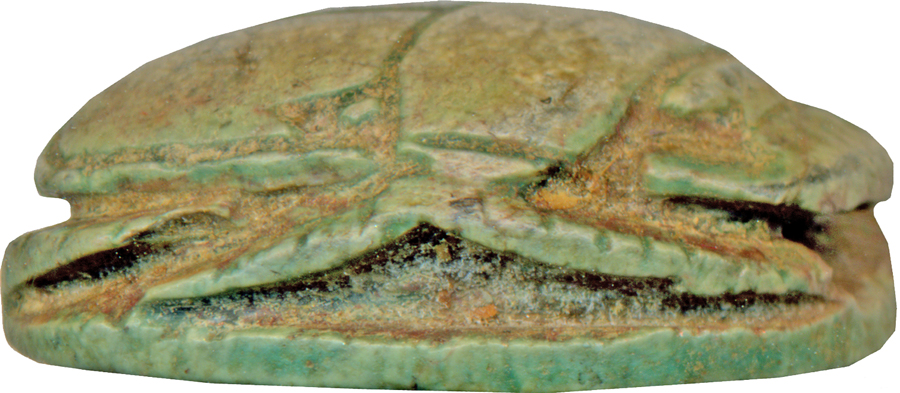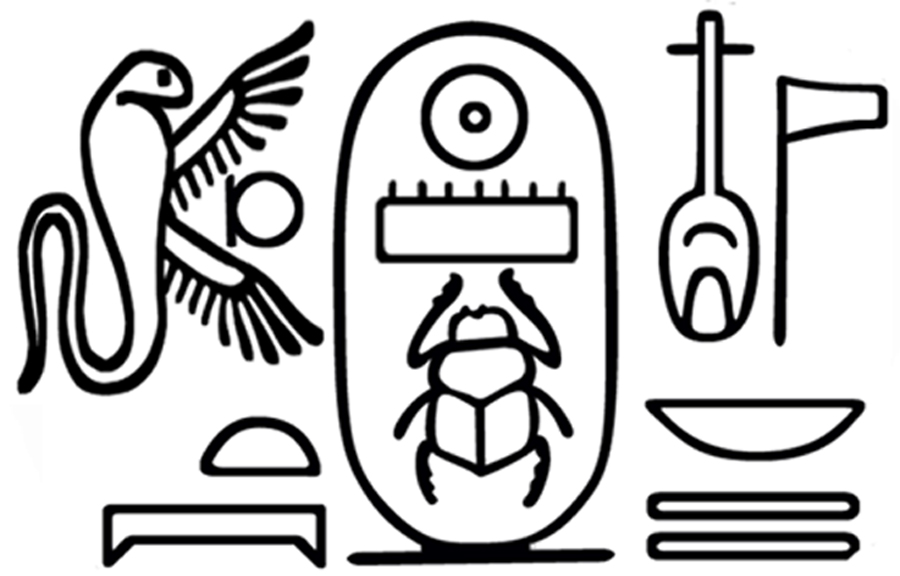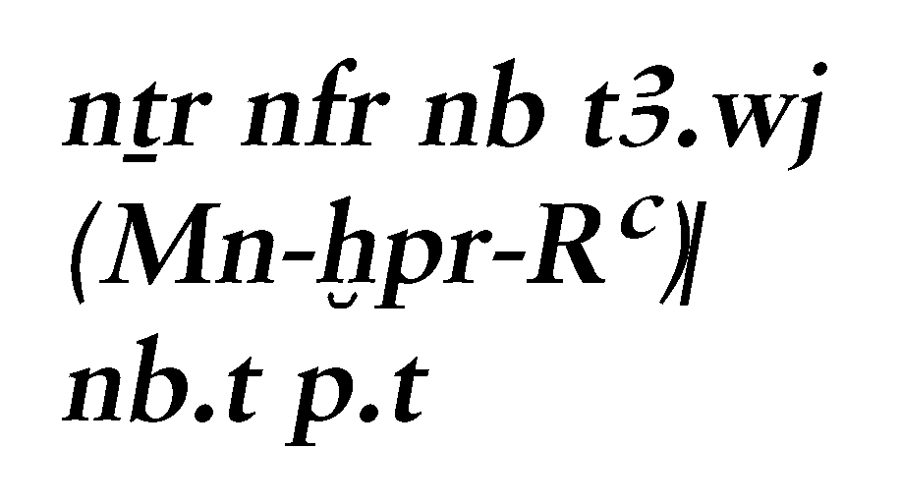Scarab with the Throne Name of Thutmosis III
(Ancient Egypt and Nubia )
This glazed steatite scarab is linearly incised with very deep detailed lines and has a sunk relief inscription on the flat bottom. The back of the scarab is executed with average workmanship, but the bottom design is poorly made.
This scarab functioned as an individualized amulet, and was originally mounted or threaded. The amulet should ensure for its owner support by the royal authority of the divine king (Thutmosis III), as well as divine protection.
The scarab was produced after the death of Thutmosis III (1479-1425 BCE). The names and titles of Thutmosis III were used also in later periods; the Egyptians saw him as a protective god of kinship and his names and titles as powerful magical elements. The additional reading of his throne name as Amun increased the power of this amulet.
Inscription
Provenance
Provenance (from the French provenir, 'to come from/forth') is the chronology of the ownership, custody, or location of a historical object. Learn more about provenance at the Walters.
Henry Walters, Baltimore [date and mode of acquisition unknown]; Walters Art Museum, 1931, by bequest.
Geographies
Egypt (Place of Origin)
Measurements
H: 1/4 x W: 1/2 x L: 5/8 in. (0.7 x 1.2 x 1.6 cm)
Credit Line
Acquired by Henry Walters
Location in Museum
Not on view
Accession Number
In libraries, galleries, museums, and archives, an accession number is a unique identifier assigned to each object in the collection.
In libraries, galleries, museums, and archives, an accession number is a unique identifier assigned to each object in the collection.
42.68












